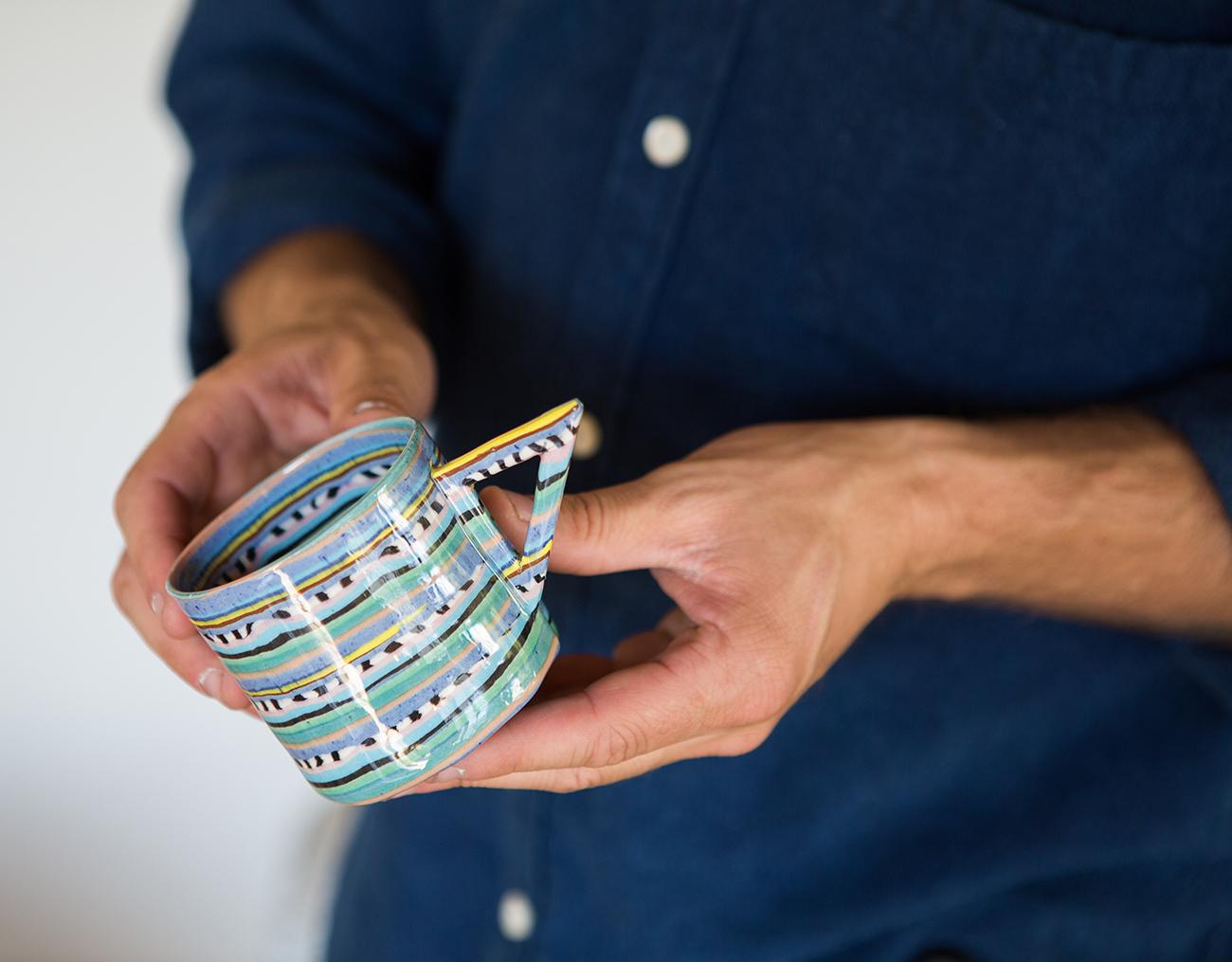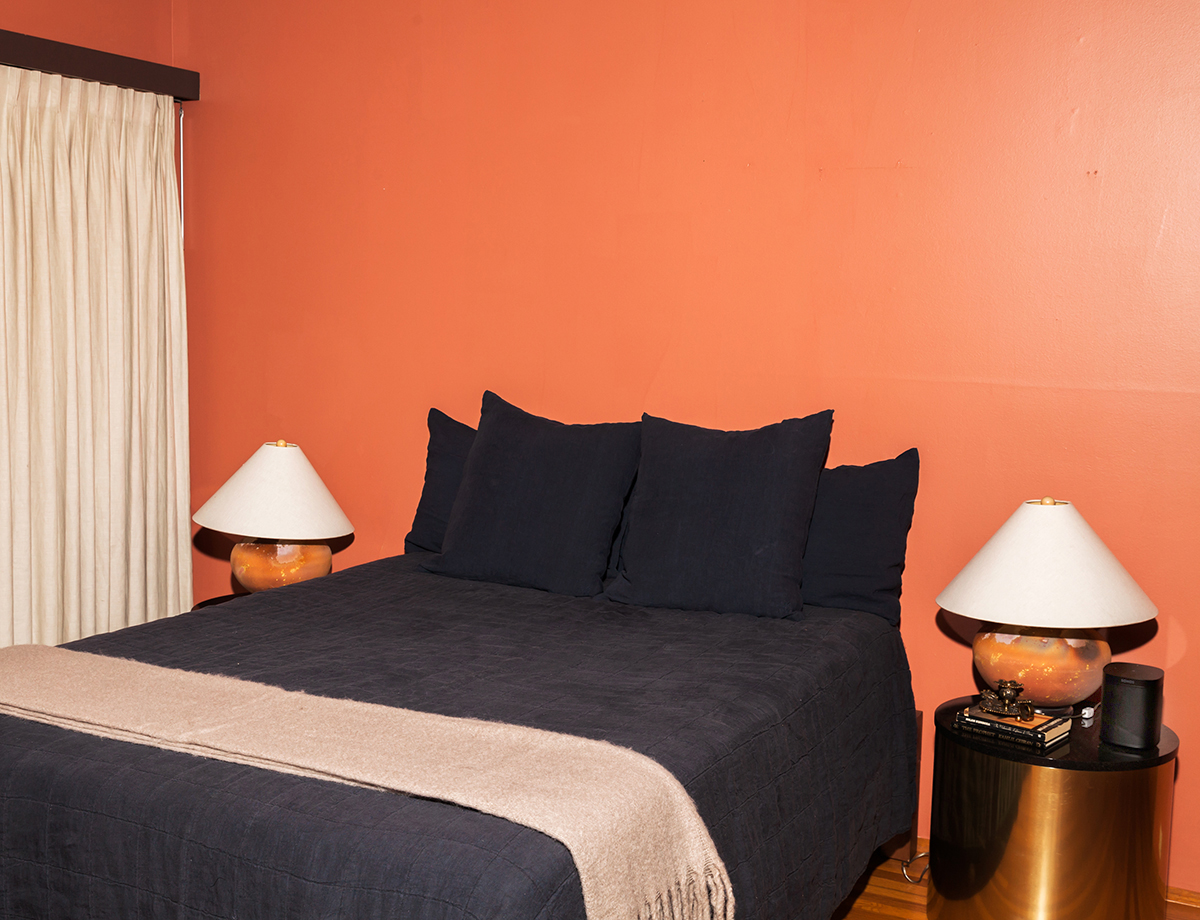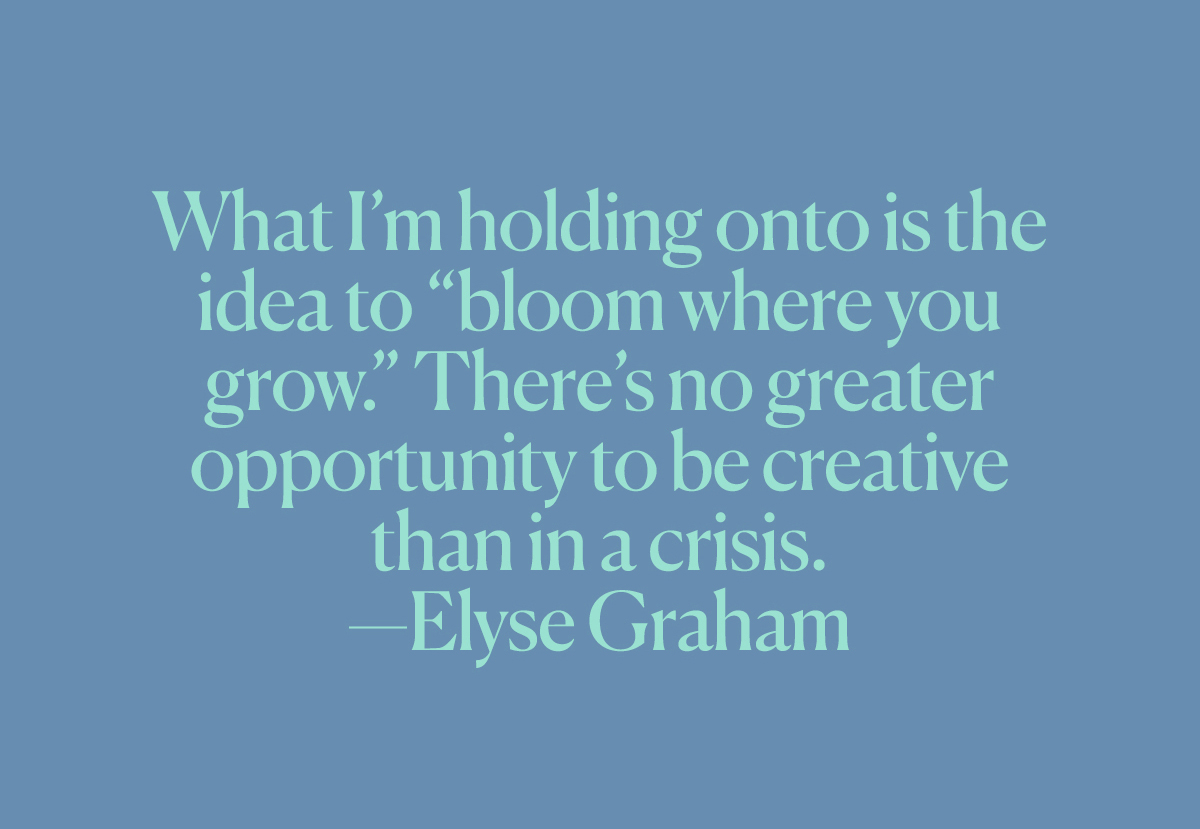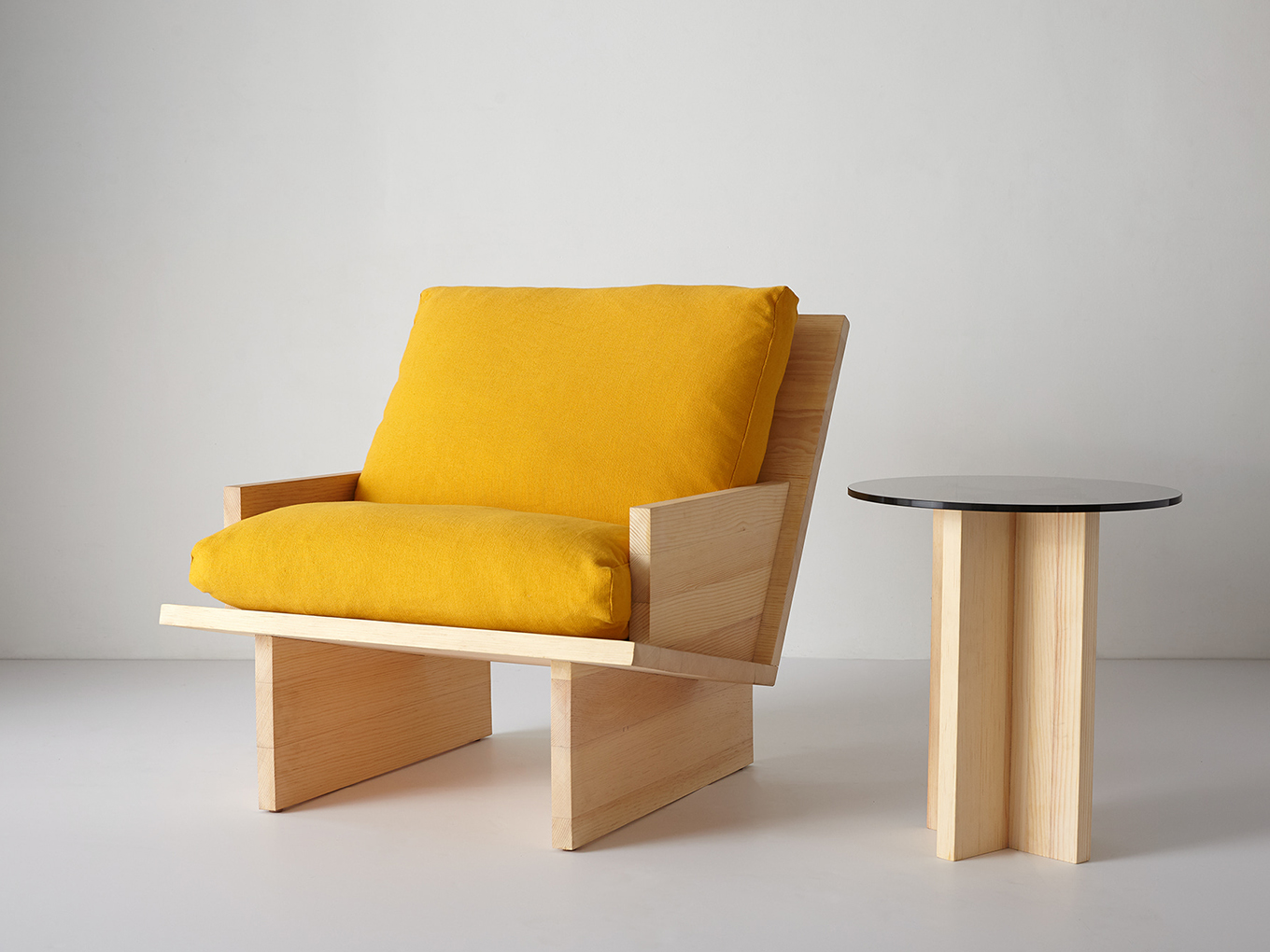
06.17.20
Sight Unseen OFFSITE
Kalon Studios On Their Pared-Down Rugosa Collection and What It Truly Means to Be Essential
This piece is part of Sight Unseen’s 2020 Offsite Offline coverage. To view Kalon’s virtual booth on Offsite Online, click here. And to find out more about their participation in our fundraiser for organizations fighting racism and improving the lives of Black or indigenous people, click here.
As design obsessives, we’ve been known to embark on years-long expeditions for the perfect coffee table, side chair — even the perfect flatware set. The word “perfect” is, of course, subjective. It holds within it an individual’s taste and proclivities, needs and non-starters. The search can be elusive, exhausting — but also thrilling and very satisfying. The new Rugosa collection from Los Angeles–based Kalon Studios offers a seven-piece slate of perfect living room pieces, for anyone tired of the hunt but also for anyone who’s over the idea of furniture that doesn’t actually get used, sat upon, or well-loved. Breezy, distilled, and spacious, the collection was inspired by — and named for — the Rhode Island beach house that Michaele Simmering and Johann Pauwen, the couple behind Kalon, visit most summers. Over a long conversation one afternoon several weeks ago — and a shorter one more recently — we connected with Michaele and Johann to explore the diminished, if not forgotten, fate of the living room, why design matters right now, and what it truly means to be essential.
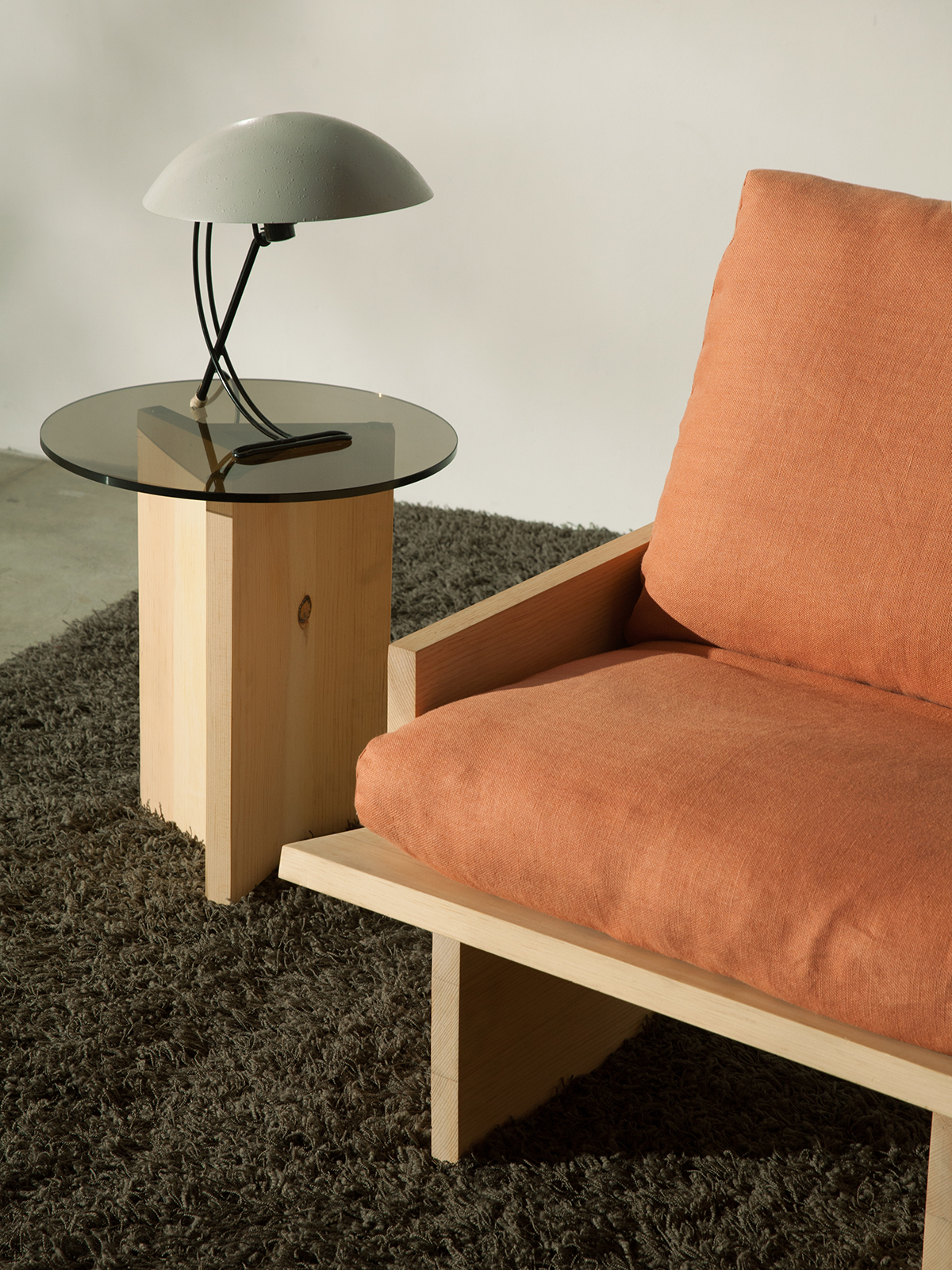
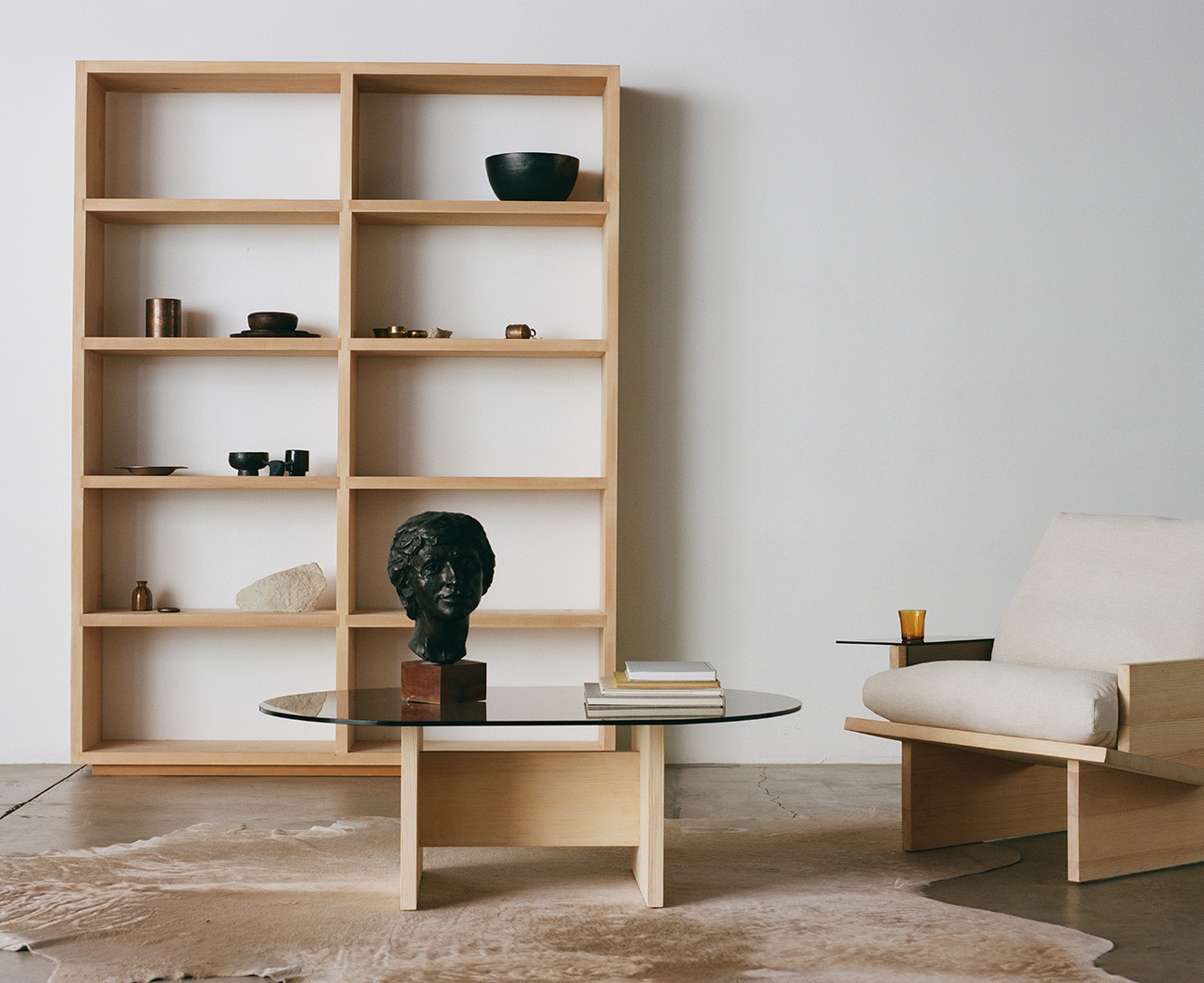
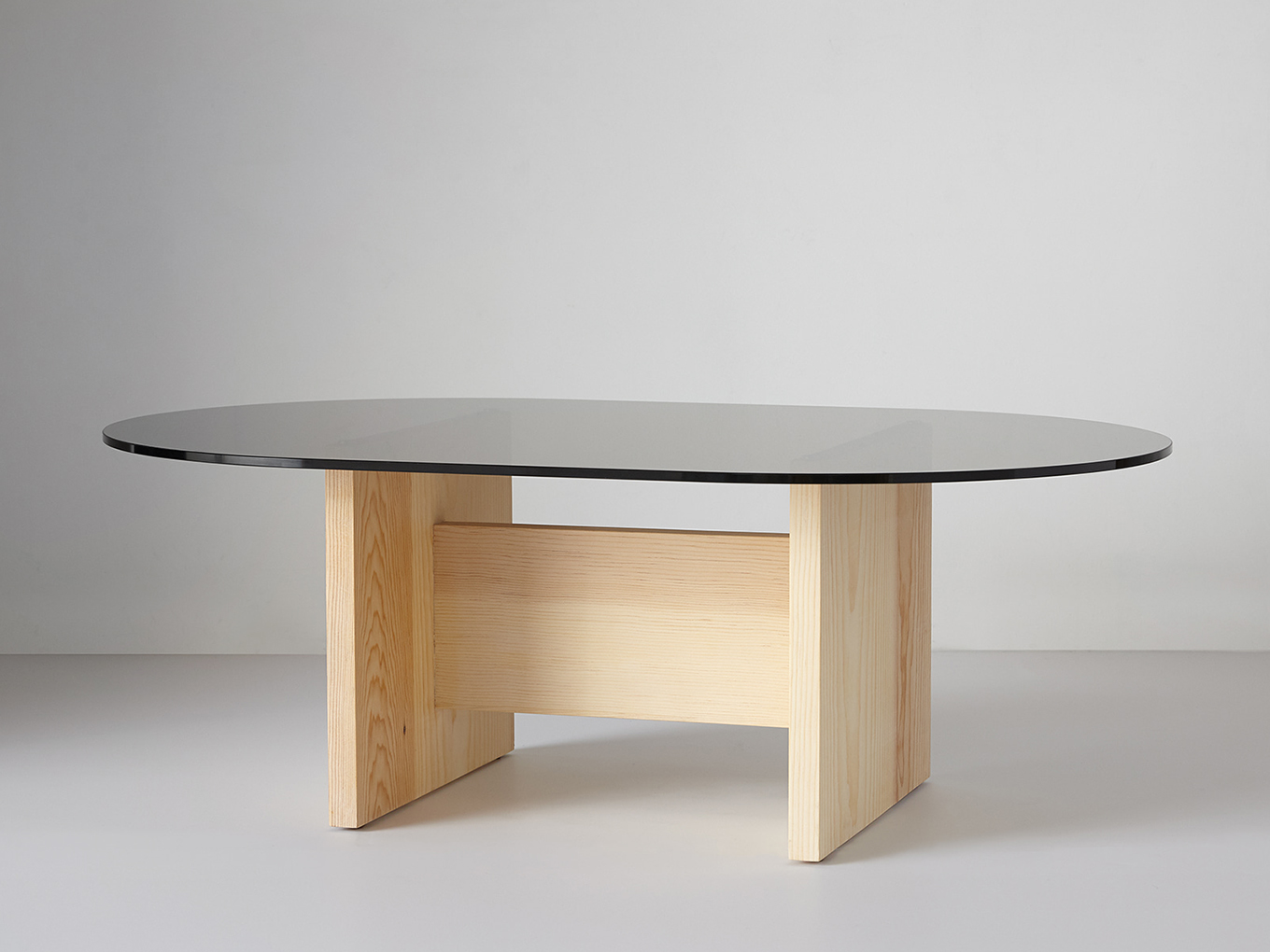
So first off, I want to say congratulations because your Offsite collection feels like a distilled perspective on the kinds of pieces we’re always searching for.
Michaele: We love that you used that word “distilled.” That’s what we’re always trying to achieve. When we talk about our broader body of work, we don’t have a desire to have an infinite catalog. Our collections are largely driven by our own homes — what the ideal pieces would be to function in the spaces we live in ourselves. Some of the pieces in this collection we’ve already been living with for a few years, with tweaks made over time.
Johann: We aim to make things that are the most essential versions of whatever it is we are creating.
Michaele: When we talk about the work, we feel like we’re trying to design archetypes. We try to take a piece, think about what this piece is supposed to be doing, and make the best version of it.
The word “essential” became so relevant this spring in terms of the pandemic — everything was suddenly framed in these binary terms as essential, or non-essential. What does that word mean to you?
Johann: In our own spaces, we’ve always kept things to a minimum. In the past, we’ve gone without furniture — we lived with a big rug and pillows in the living room and a desk to work at. We live with less so that we can understand what function we are looking for — so that we can land on pieces that are absolutely necessary and essential for our lives. Frivolity is the opposite of essential, right?
Michaele: Sometimes, I think of furniture like walls — they’re changeable (with color or textiles), but less so than a lot of other parts of your home. This makes furniture a unique challenge because you’re designing something that should endure many different shifts in a person’s life.
Having those pieces be essential, timeless, and able to evolve to reflect changes in taste or need is important. Right now, with the pandemic, people are looking around their homes and lives and that question of essentialness is coming up.
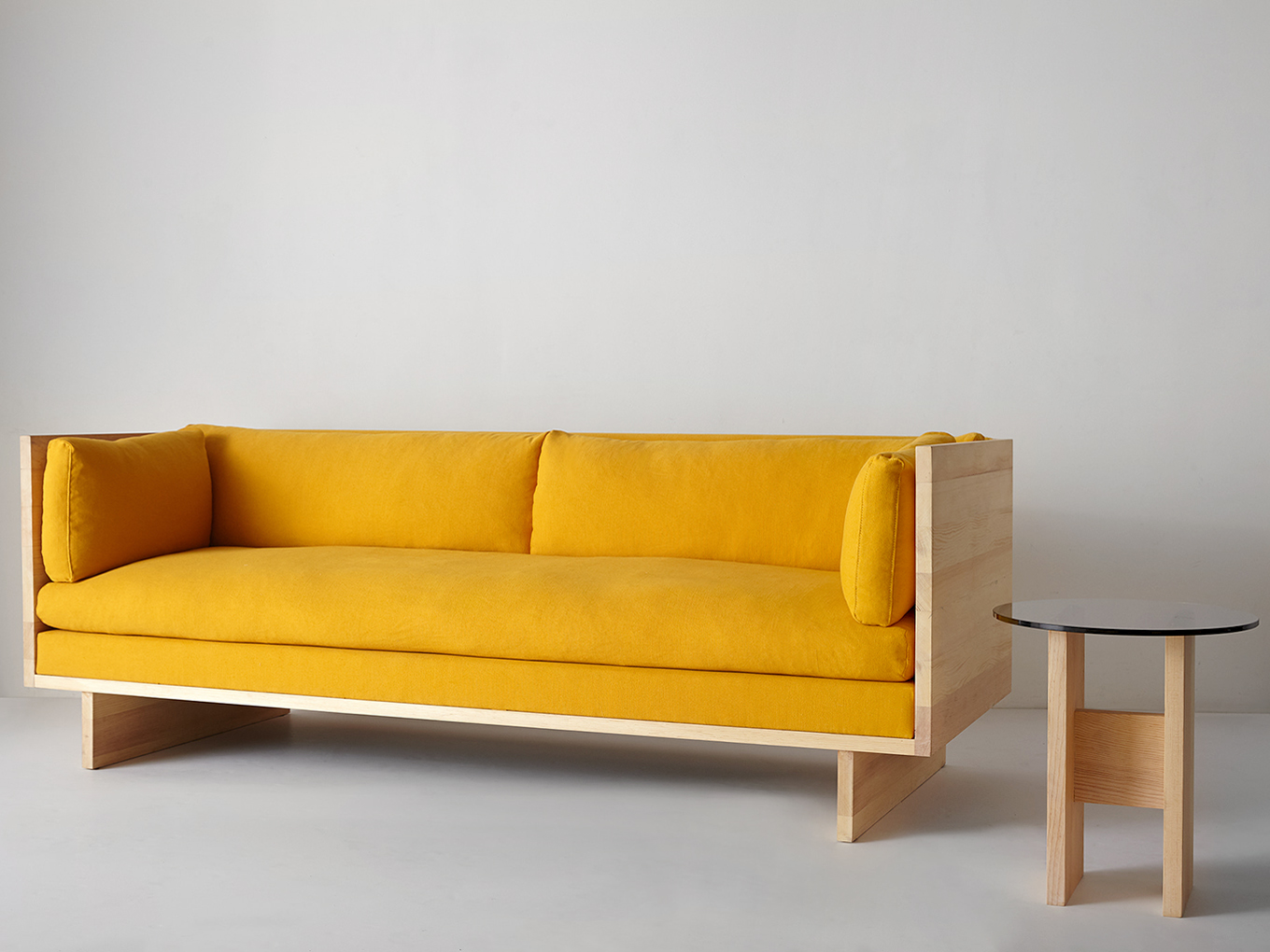
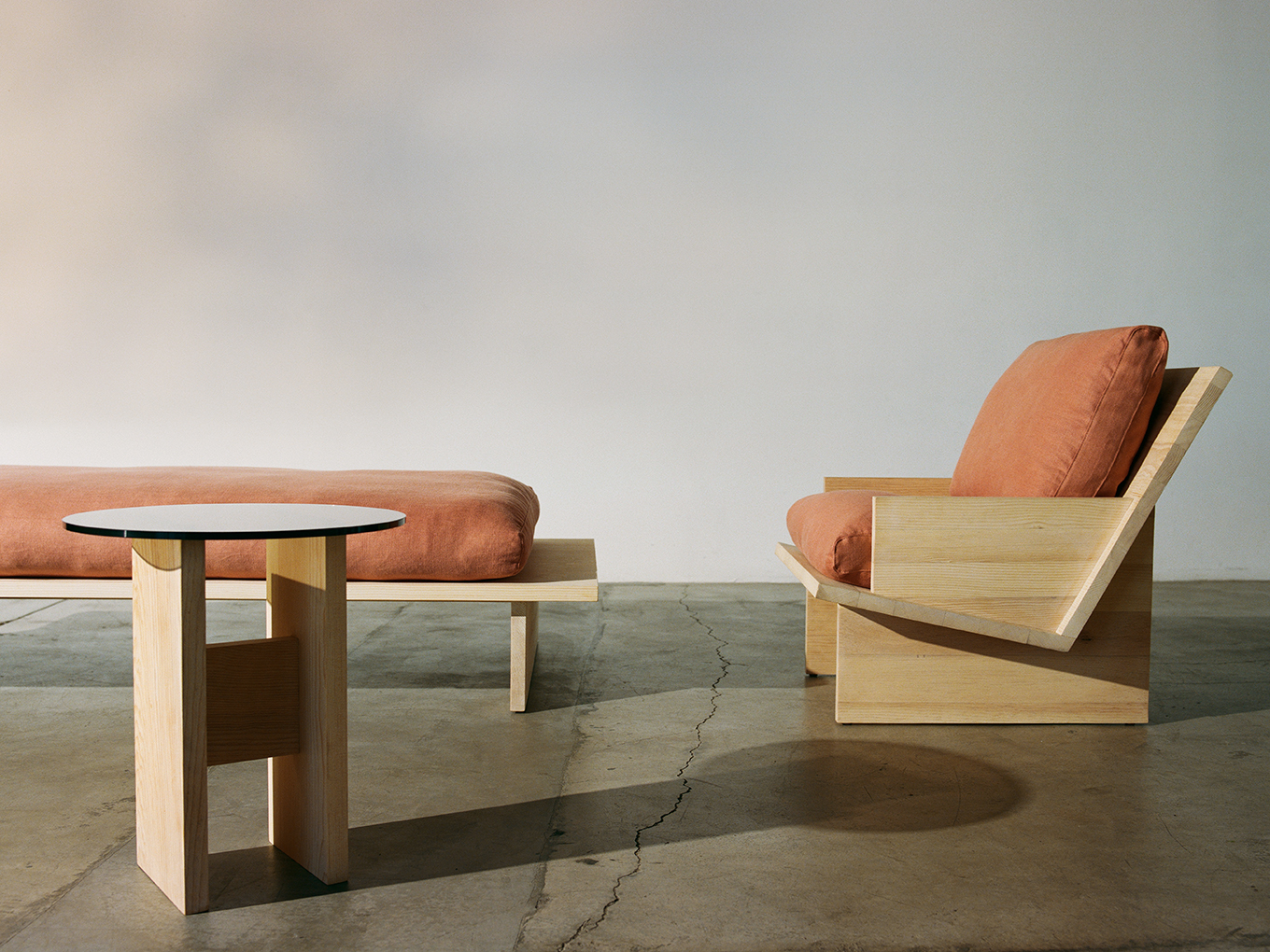
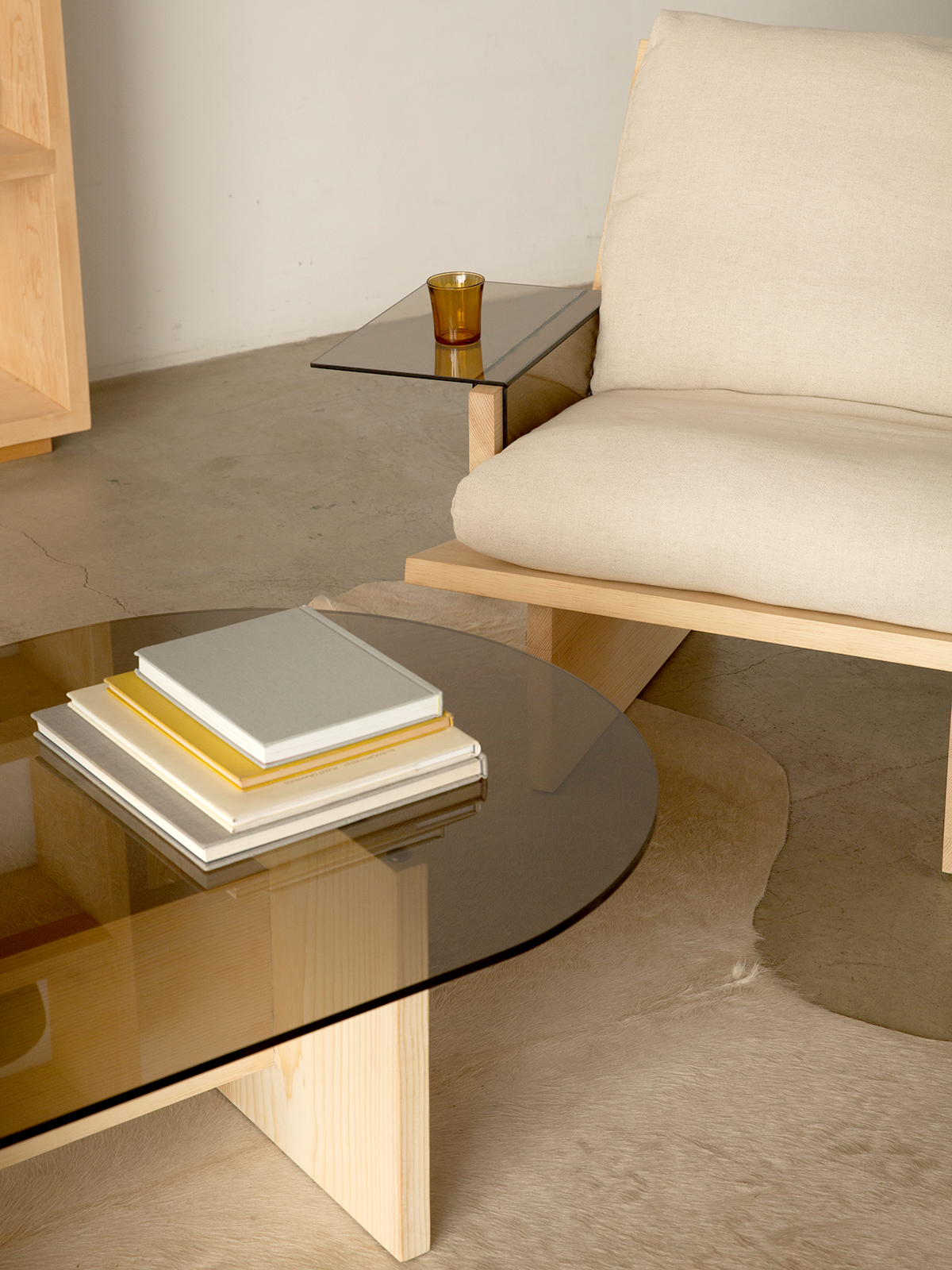
Speaking of frivolity, what has it been like to release a furniture collection in the context of what’s happening in America right now? I know over the past few weeks, a lot of people suddenly had the feeling that everything design-related was somehow frivolous.
Michaele: Releasing work in 2020 has been challenging, almost paralyzing. Both the pandemic and the Black Lives Matter movement have turned the lens inward. Everyone is questioning everything.
Design isn’t frivolous. There are ways of practicing that are frivolous, but our entire world is designed, so design is incredibly powerful. Designs are value statements and inherently ideological. As designers, we have the ability to craft the world we want to live in. We have the power to change not just how the industry works but how consumers understand and appreciate the world they live in. I find this incredibly empowering and deeply meaningful.
Johann: For us, design has always been a tool for change and positive impact. Kalon was founded with that ethos and it guides everything we do. We believe the choices we make about the objects we design (what they’re made from, how they are made, who makes them) have a deep impact on the economy and the environment, as well as the health of both individuals and our communities. The traditional values of good design (quality, form, function and material) are all relevant, but, for us, design goes beyond that.
You’ve been very active on Instagram taking a stand for things like Black Lives Matter. I know it can be hard to decide as a brand exactly how vocal to be about activism, but it also suddenly feels like something we all have to be doing. What kinds of conversations have you been having?
Michaele: There are a myriad of ways of talking about a project. Sometimes, it feels important to discuss aesthetics or practice. Right now, with our country at a tipping point, it feels important to overtly address the ideologies that drive our work. Politics have always been an inherent part of what we do, but there’s been a curtain up. In the past few weeks, we ripped it down and that felt essential. We’re having a lot of conversations about what’s going on. We believe that direct engagement with our community is critical at this moment. And these past few weeks have reaffirmed our fierce commitment to Kalon’s broader project of sustainability.
Johann: The way we work and decide who to work with is not accidental. We specifically work with small stores to support independent boutique culture. Not only in support of a more interesting and dynamic street culture, but also to reject the trend of consolidation by large corporate America and to foster diversity. This approach extends to factories and workshops as well. When talking specifically about “design,” through the lens of the Black Lives Matter movement, we have been very introspective about the practice and output. We consider our work to be following the Modernist tradition. That is to say it reflects the international style which rejects specific cultural values and aspires to universality. It espouses inclusion but has its origins in early 20th century Western Europe. So is this so-called global understanding of universality inherently white or patriarchal? Obviously, the idea of universality is flawed, so is the project worth pursuing?
Is your practice different in the current climate?
Johann: Until late May, we were more or less uninterrupted in our studio practice. But right now, we’re out in the streets protesting. In the studio, we’re dedicating resources and time to local advocacy groups and having deep conversations. It’s a very different environment from what was happening pre-pandemic or even to what was happening a few weeks ago. In terms of the pandemic normal, we’re physically distancing, but it’s not like we can’t continue to do the rest of our work. The way that our studio is set up and the systems we have in place make a transition to remote working seamless. Everyone is still able to do their jobs and functions, with the added challenge of being remote. Conversations can’t happen spontaneously and instantaneously.
Michaele: Thinking about our production, many of our peers produce in-house or import. Those production models have been impacted by stay-at-home orders, border closures, curfews and social distancing requirements. The production set-up that we have — which is all domestic and small, boutique manufacturing — we still have access to almost all of these resources. We’re grateful.
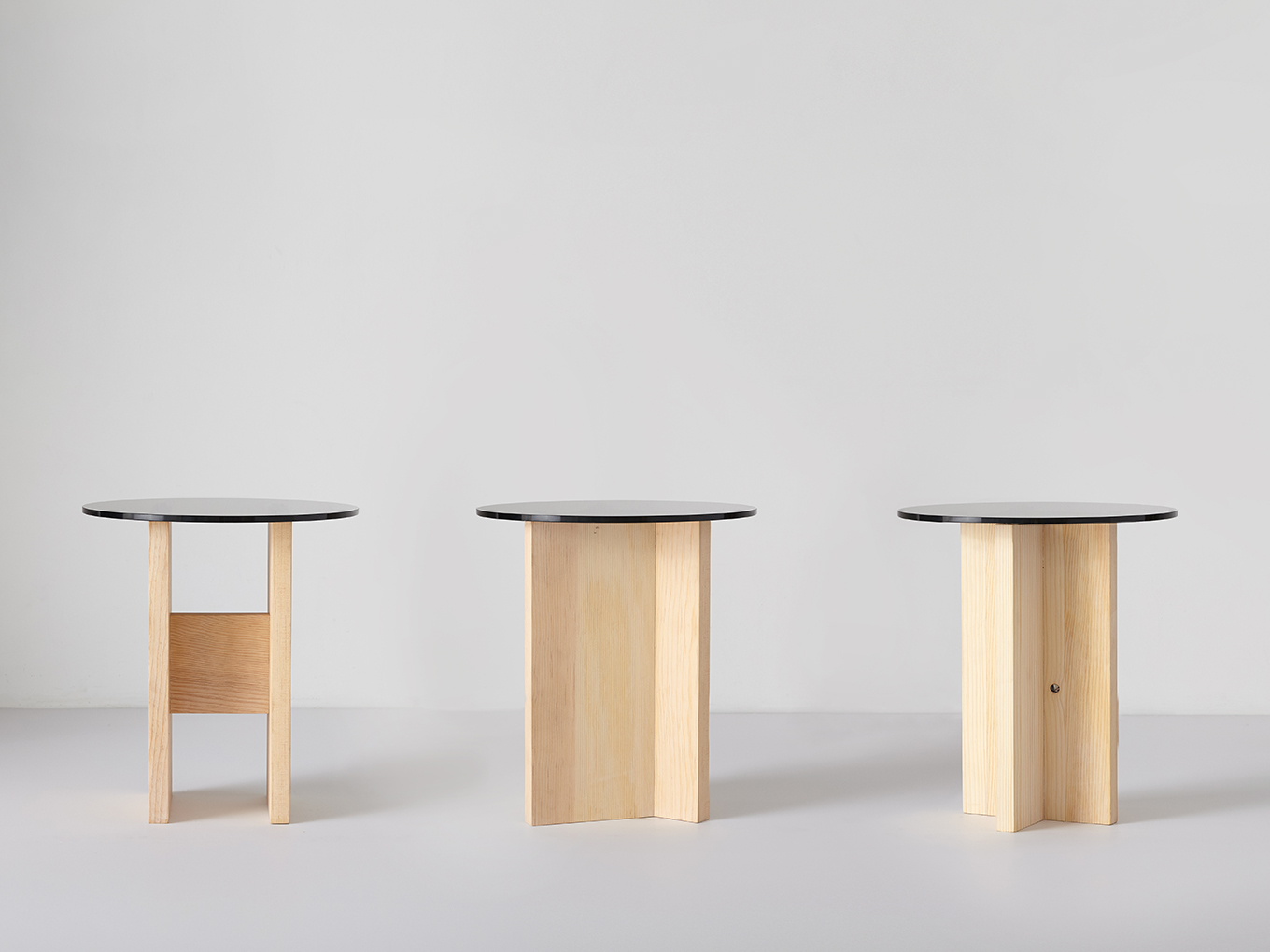
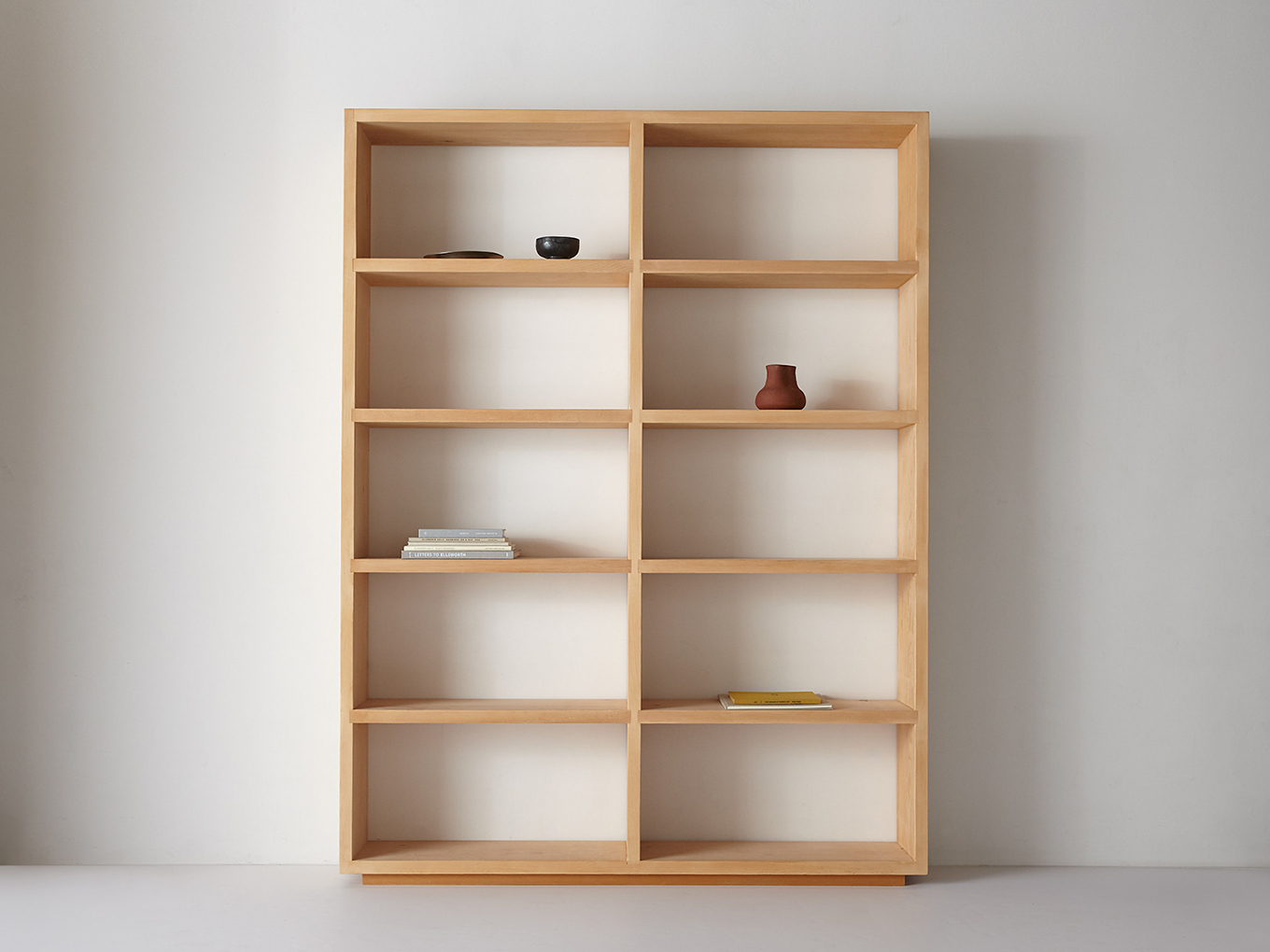
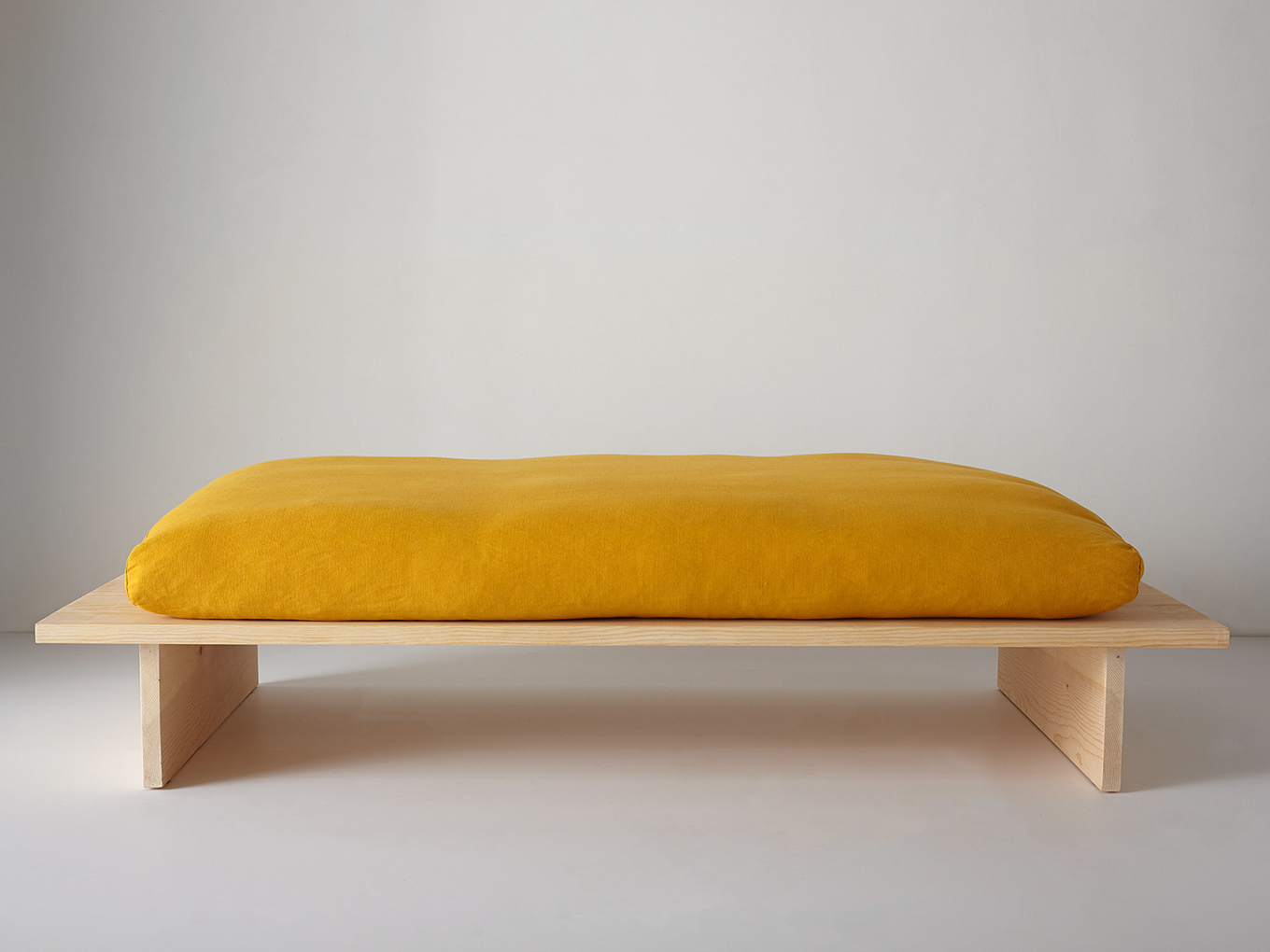
What’s been your relationship with creativity lately?
Johann: We thought we’d be hunkered down with very little access to our day-to-day workflow. That made us think we would have the time and space to focus on some new projects. In a way there was a hope that this might be a welcome pause.
Michaele: It’s hard to extract creativity out of this moment. We’re trying to be creative with how we spend our time, but we’re not necessarily going to come out of this with a new body of work.
What’s been inspiring you lately?
Michaele: There has been an incredible amount of reflection and conversation. In ways, that ties back to the collection in a nice way. The city of Los Angeles is being called on to reimagine itself. So is the nation. We have a responsibility as an industry, as designers, to imagine differently, to practice differently. This moment isn’t just about reaction, it’s about how we practice moving forward. I find this deeply inspiring.
Johann: The entire city of Los Angeles is taking a deep look at itself. There is an incredible amount of conversation about the city. The pandemic stirred up conversations about healthcare, homelessness, economic inequities, traffic and all sorts of ways in which we live in this city. The Black Lives Matter movement has called on Los Angeles to re-imagine itself. Not to just fix traffic here and there for better air and bluer skies, but to completely re-think, re-design life and living in Los Angeles. I cannot think of a more inspiring moment than when a community gets together to re-design itself.
Ok, switching gears a bit. Tell us about your Offsite collection.
Michaele: This collection reflects our ideal living room pieces. It came out of a two-year conversation between Johann and I about the role of the living room in people’s homes these days. We were really trying to figure out what is going on in that space — how do we make people use that space? What would make us use that space more in our own home? The collection is also drawing inspiration from, and is named for a family home, called Rugosa, that we visit every summer in Rhode Island. It’s a place that has deep meaning in our life.
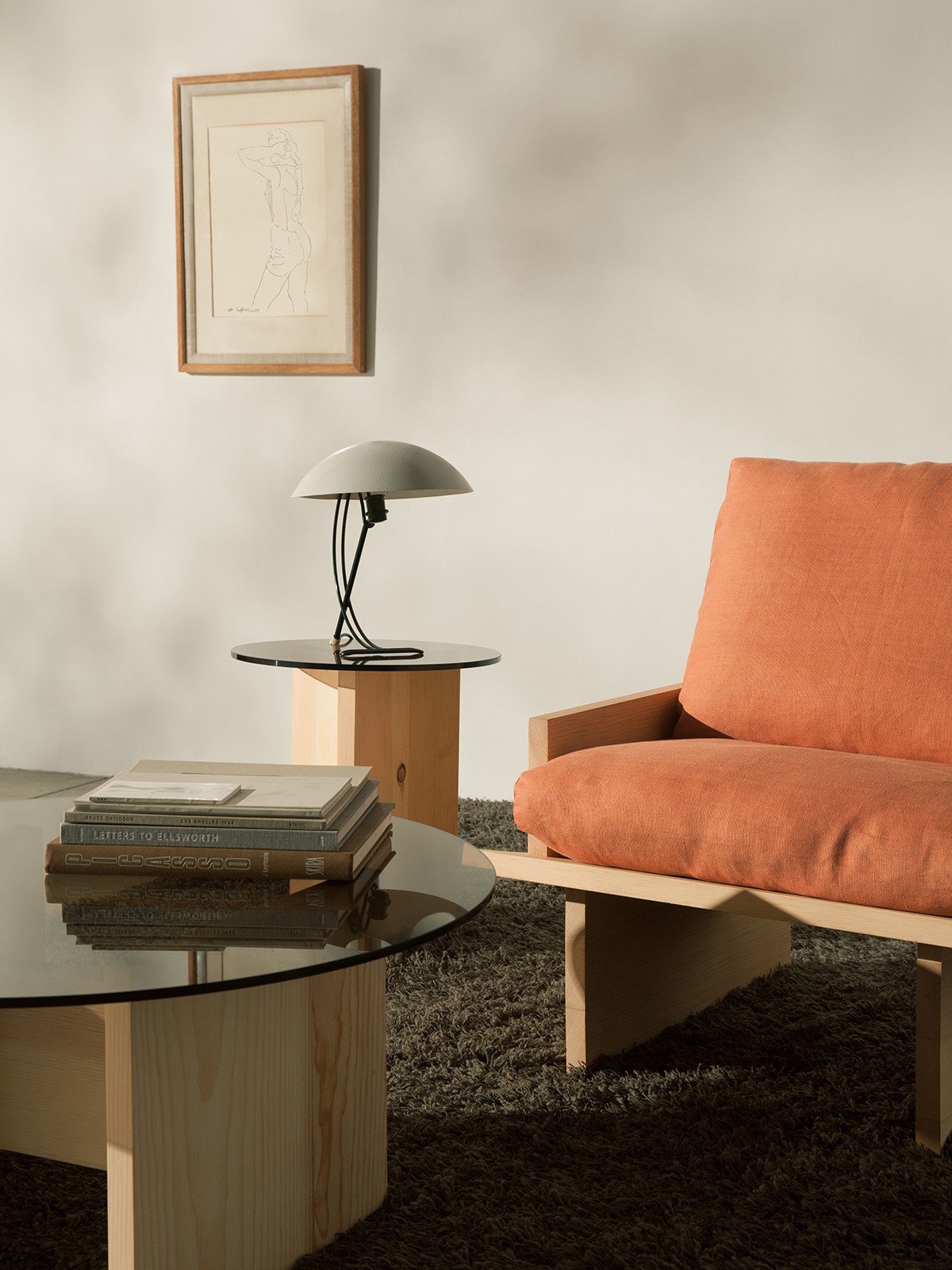
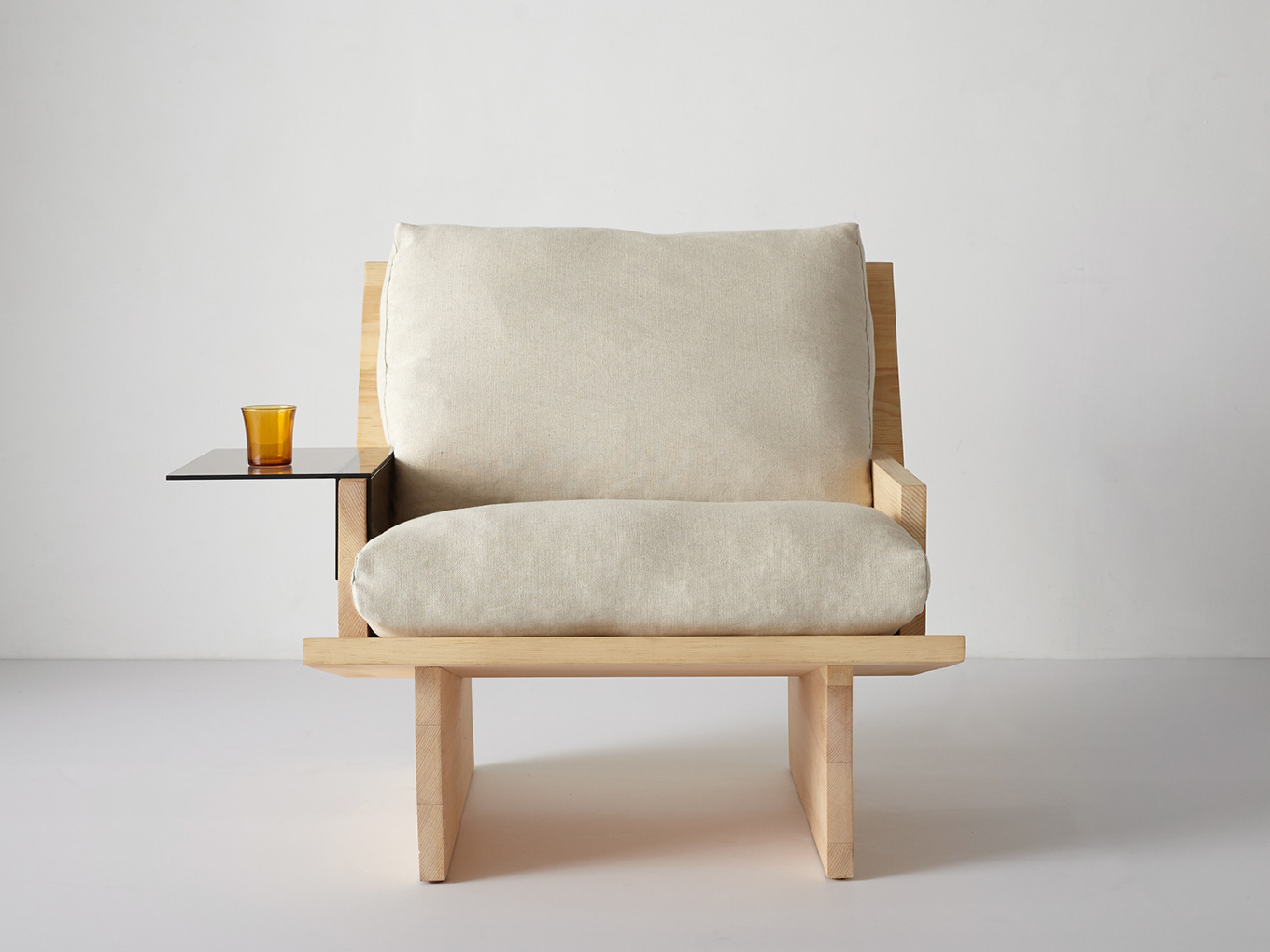
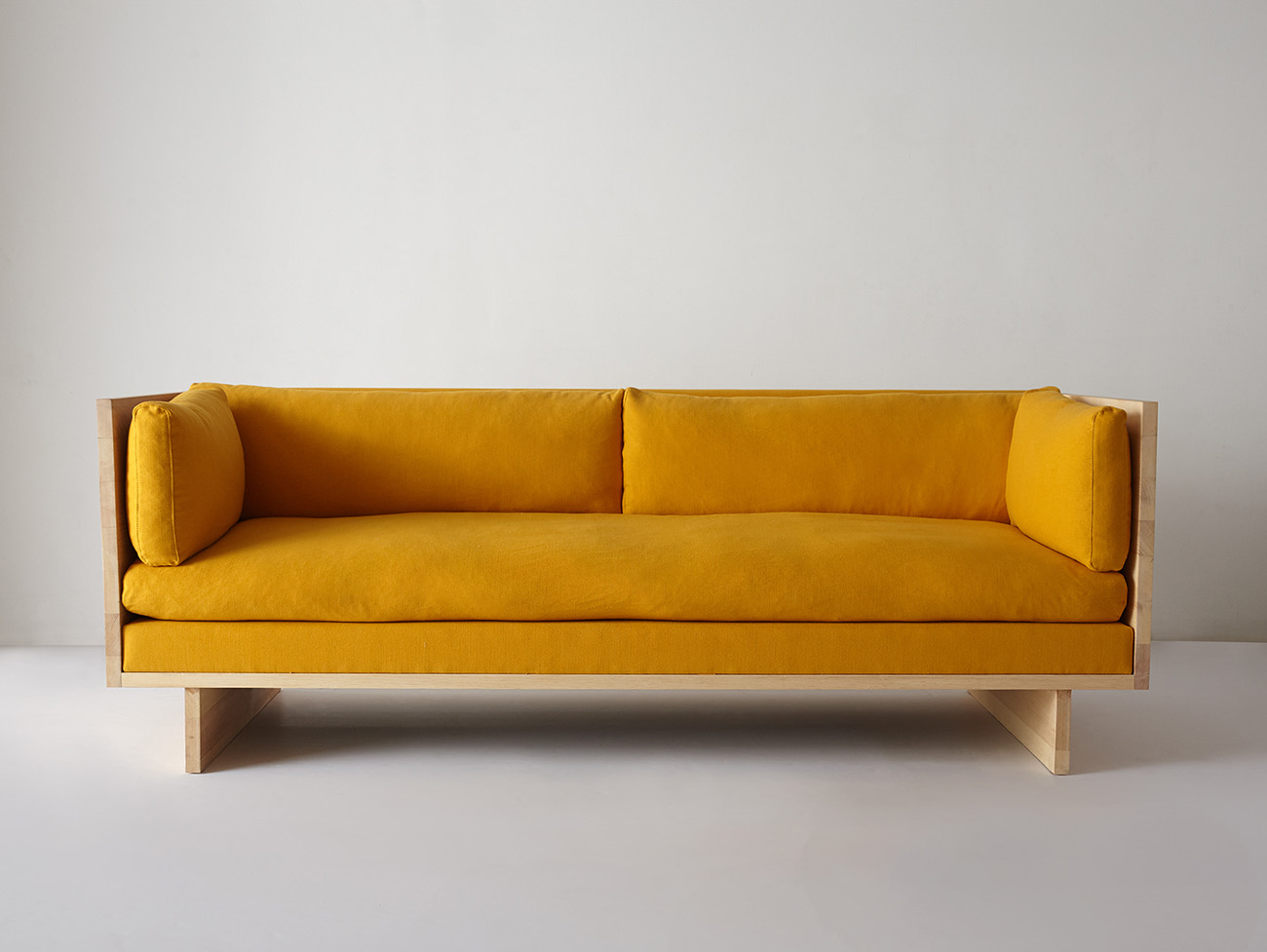
It’s been said that the living room is a bit of a lost room… can you speak to that?
Johann: When designing this collection, we were asking ourselves how do we — collectively — use a living room? We didn’t have a coffee table in our own living room for a long time. We actually used our benches as coffee tables. So that made us ask, what is it people want out of a coffee table? Why do we have a coffee table? What times of day are we using a coffee table? And the same goes for thinking about living rooms. What are they used for? When? We use our living room for reflecting and also for entertaining. We use it alone and with other people. We wanted to create a collection where that flexibility was really part of it, but even more so, a collection that facilitated those moments.
Michaele: I don’t think most people use the living room when entertaining. It’s been something that has absolutely driven me crazy for years. Unless you’re living in a studio apartment, homes have a kitchen and a living room. But when you have people over, everyone’s in the kitchen. Living rooms are a huge space in most people’s homes and nobody uses it. So we talked about the history of living rooms to explore their original function. The bedroom is very clear, the kitchen is very clear… but with the living room, I think of more formal settings, like the ones you see in period movies where people are eating cakes and things.
The way we see it, the living room ideally should be a place where you can go and spend really long stretches of time listening to music, reading a book, being alone with yourself, being totally comfortable — and it should be a space that can sustain multiple people being comfortable and invite conversation.
Do you think that’s a rarity these days?
Michaele: We looked at a lot of people’s living rooms over the years, and we talked about whether they were successful. I think we found two living rooms of all of them where we felt like they would be welcoming by yourself and for a whole bunch of people.
One of them is the living room at Rugosa. People spend all day there. When we’re in that house, the living room is the most used space in the house and I love that. That space was enormously influential to us when we made this collection. The idea was that the furniture was there to do its job — but also create space for your mind to wander, for you to live your life. It is not meant to impose itself on you, but rather invite you in.
What about the materials and colors you chose?
Michaele: Every material we chose was to underscore a sense of welcoming ease. Familiar materials that are easygoing and casual speak to the kind of warmth and usability that we wanted people to feel when they interacted with these pieces.
Johann: Comfort through familiarity.
Michaele: The linen is very much with Rugosa in mind. It’s humid there in the summer and fabrics have to be breathable. As for the colors, it was really hard to narrow it down to three. We wanted colors that felt very contemporary, poppy, but not overbearing. The yellow in particular is a pretty vibrant color, but still neutral. Wood offers such a beautiful backdrop to great colors.
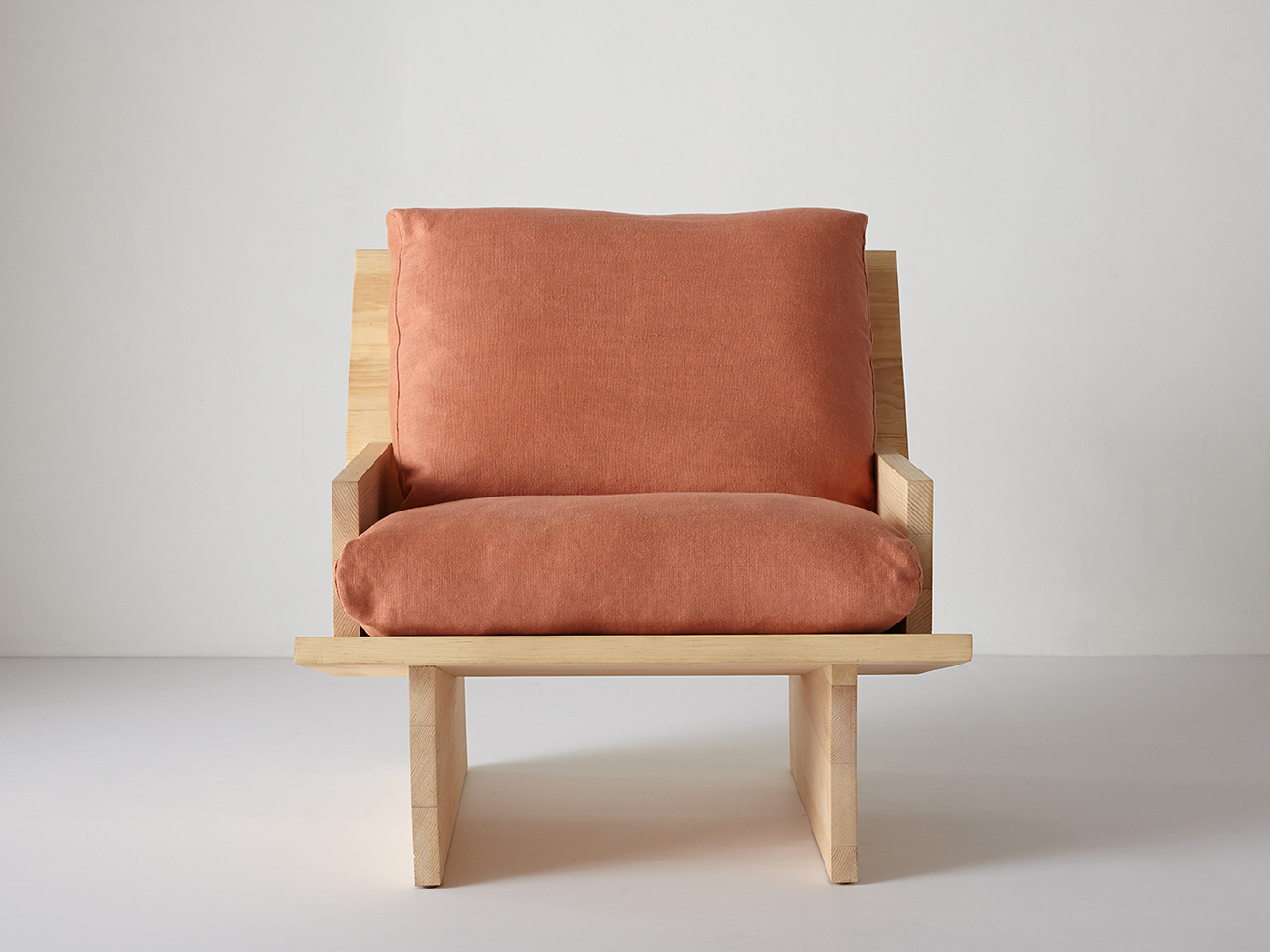
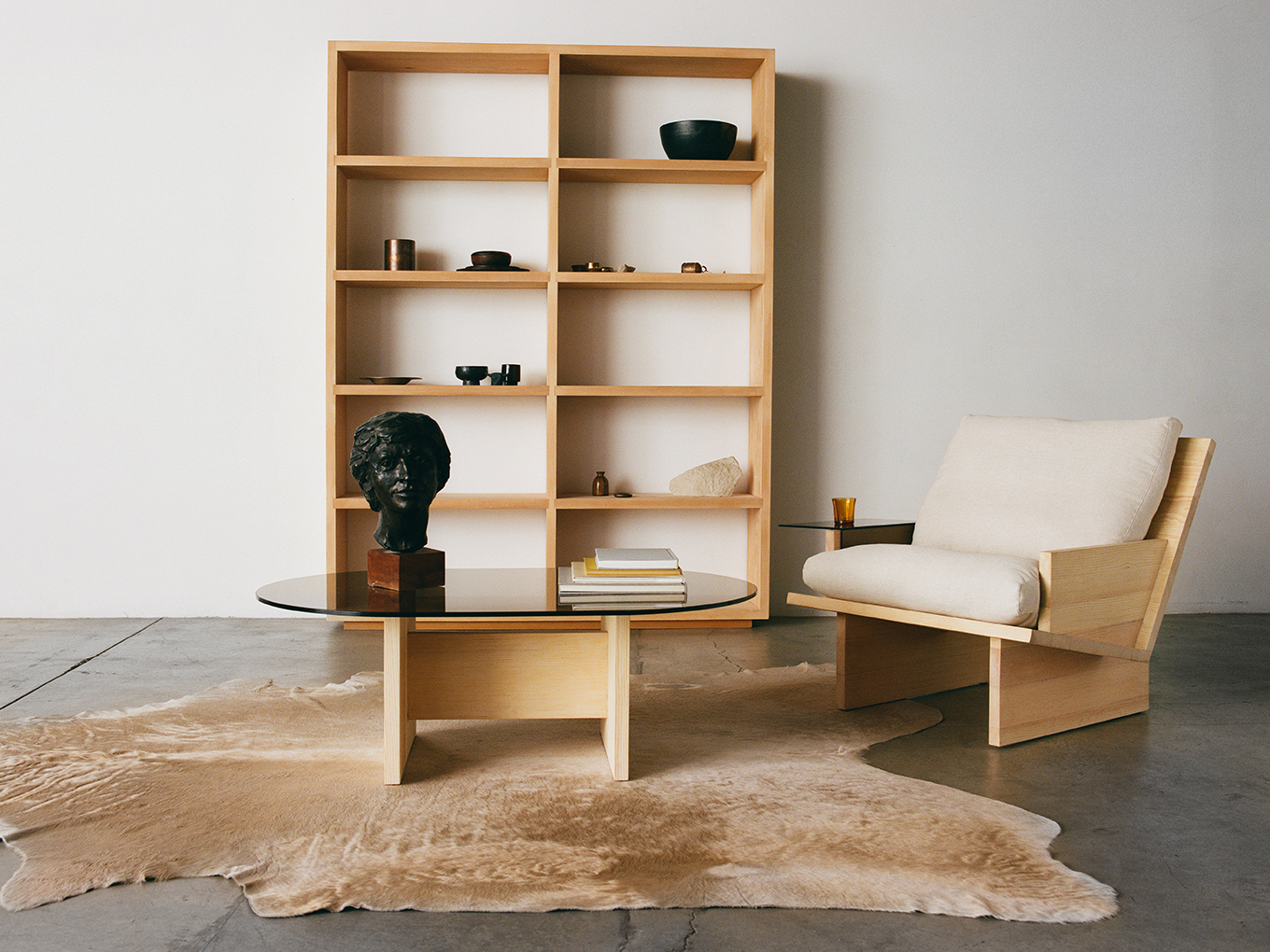
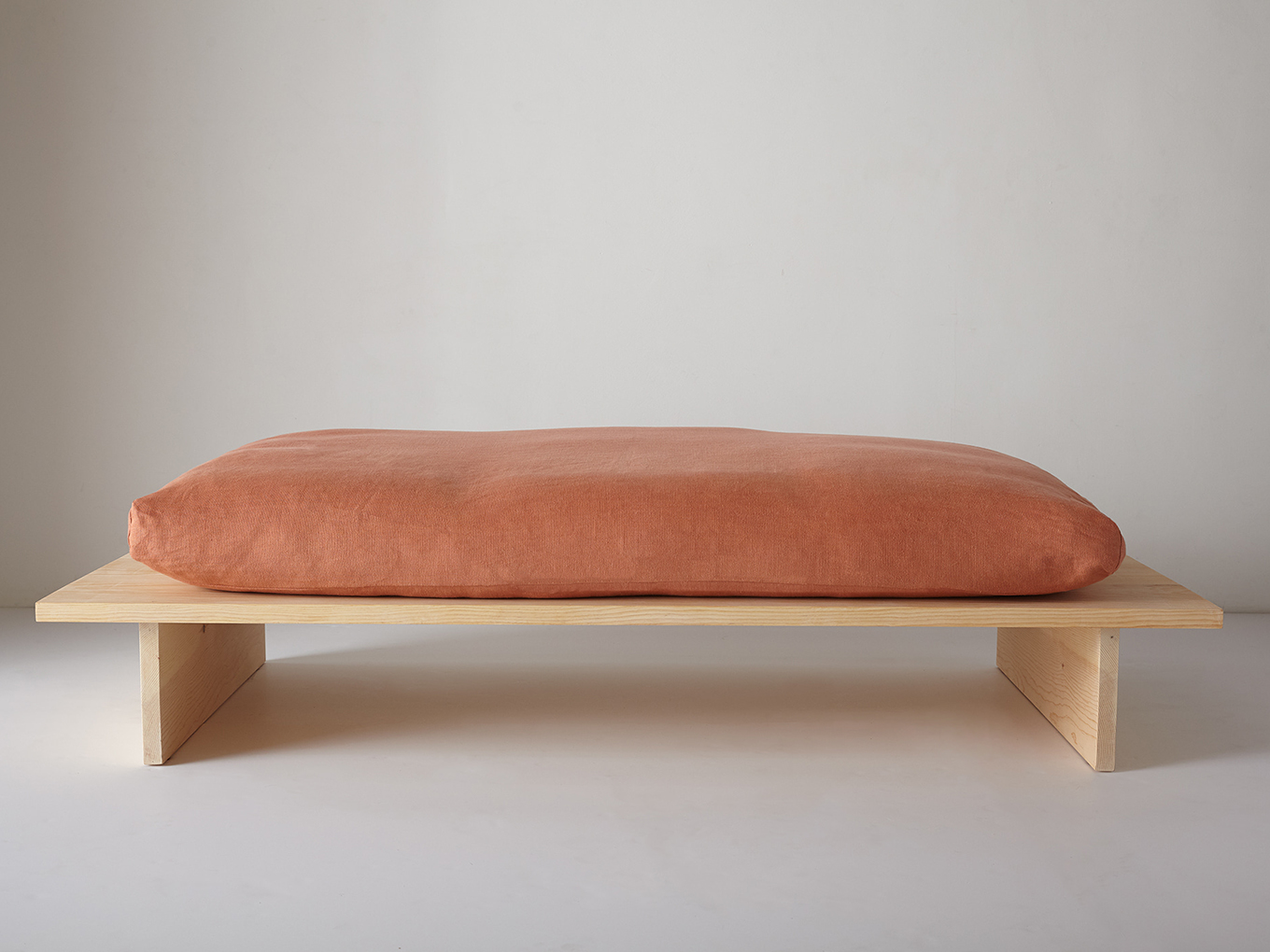
It’s very sunny, I feel like it’s bringing the outside or nature in a little bit. What feelings were you hoping to evoke for customers or people who come into contact with these pieces?
Johann: Our intention was to create an uplifting space where you can be with yourself or in conversation. So there’s a brightness to it — literally, the wood is bright and the yellow is bright, but there is also a light, uplifting, happy quality to the designs. They’re not heavy, they don’t take you down. For however reduced the pieces are, they’re still lively.
Michaele: Yeah that’s true. If you think of a sofa, it’s probably the biggest piece of furniture in most people’s homes. It takes up so much visual space. That was another big consideration for us when we design. We asked how we could make these massive pieces that feel visually light in a space, and not a ballast holding the whole room down.
The colors feel especially relevant to the landscape of California, as if this collection might be bridging the space between the Rugosa home in Rhode Island, and your home in Los Angeles.
Michaele: I think that’s probably very, very true. Any creative product is a tumble of all the influences that are happening in your life. I often look at our work and am struck sometimes by how much California does influence what we’re doing.
Do you have a favorite aspect of the collection that you want to share or talk about?
Michaele: The amount of consideration that went into every single angle. When you look at it from afar, each piece appears to be really simple. But with the chair, for example, we designed it to put your body in a very particular position that we feel is most ideal. I like to sit with my feet up on a chair, so it’s wide enough to do that. You feel a sense of space. I love that these pieces are “just” flat pieces of wood — but configured in a way that I find really interesting. We spent a lot of time balancing the heavier planks of wood, flat surfaces, and broader shape with an intention to maintain a lightness and character.
Johann: The cushions are very intentional, too. They’re 100% feather, and the reason we chose this over an organic foam is that the foam will keep a perfect shape. All the wood in the collection is already so pristine, so precise, we wanted something a little rumpled and a little off. The feather fill will never be perfectly square. There’s a lack of rigidity, even though the forms are very rectilinear, thanks to the cushions.
I feel like your work satisfies our collective attraction to Donald Judd alongside a more livable, functional comfort.
Michaele: Most people want to actually sit on and use their living room furniture. We use something called decking, it’s kind of a built-in platform that provides an extra layer of softness in these hard pieces. This collection was designed with an insistence on comfort and our belief in the possibility of achieving comfort in clean, minimalist designs. Good design is inseparable from how pieces are made and who is being touched by the process — not just the sourcing and the making, but where that design goes after it leaves our hands.
